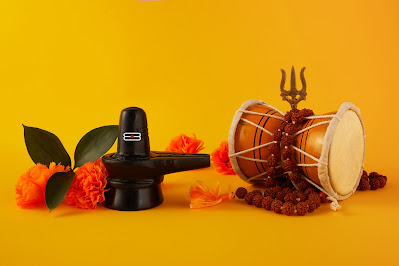Mahashivaratri is a Hindu festival that is dedicated to Lord Shiva and is celebrated with great zeal and enthusiasm by his devotees all over the world. It is one of the most important festivals in Hinduism and is celebrated on the 14th day of the dark fortnight (Krishna Paksha) of the Hindu month of Magha (February/March). The festival symbolizes the victory of good over evil and is considered a day of great spiritual significance for Hindus.
The word ‘Mahashivaratri’ means ‘The Great Night of Shiva’ and it is believed that Lord Shiva performed the Tandava dance on this night, which represents the cosmic dance of creation, preservation, and destruction. This festival is considered a time of introspection and devotion, and many devotees observe a fast, perform puja (worship), and stay awake all night to offer their prayers to Lord Shiva.
Pooja Items Used in Mahashivaratri
The pooja (worship) performed during Mahashivaratri is an essential part of the festival and is performed using specific items that hold great significance. These items include:
Bael (Bilva) Leaves: Bael leaves are considered sacred in Hinduism and are used in puja to Lord Shiva. The three leaves represent the trinity of Brahma, Vishnu, and Mahesh (Shiva).
Sandalwood paste: Sandalwood paste is applied to the lingam during puja as a symbol of devotion and purity. It is also used for its calming and cooling properties.
Datura Flowers: Datura flowers are commonly used in Hindu puja as they are believed to have purifying properties. They are also said to represent the victory of good over evil.
Bells: Bells are rung during puja to drive away evil spirits and to create a spiritual atmosphere.
Coconut: Coconut is used as an offering to Lord Shiva as it symbolizes the removal of ignorance and the attainment of knowledge.
Holy basil (Tulsi) leaves: Tulsi leaves are considered sacred in Hinduism and are used in puja as an offering to Lord Shiva. They symbolize purity and devotion.
Incense Sticks: Incense sticks are used to purify the air and create a spiritual atmosphere during puja.
Lamp: The lamp is used to represent the light of knowledge and is used to light the way during puja.
Significance of Mahashivaratri
Mahashivaratri holds great spiritual significance for Hindus and is considered a time of introspection and devotion. Some of the key significance of the festival are:
- The Victory of Good over Evil: The festival symbolizes the victory of good over evil and is a reminder that even in the darkest of nights, the light will always triumph
- A Time of Purification: Mahashivaratri is considered a time of purification and renewal. It is believed that by observing a fast, performing puja, and staying awake all night to offer prayers to Lord Shiva, one can purify their soul and attain spiritual enlightenment.
- The Power of Devotion: The festival is a testament to the power of devotion and the impact it can have on one’s life. It is believed that by offering their prayers and devotion to Lord Shiva, devotees can attain his blessings and receive guidance on their spiritual journey.
- The Importance of Meditation: Mahashivaratri is also considered a time for meditation and introspection. It is believed that by meditating on Lord Shiva, one can attain inner peace and clarity.
- The Celebration of Life and Death: Lord Shiva is considered the Lord of Destruction and is responsible for the cyclical nature of life and death. During Mahashivaratri, devotees celebrate the duality of life and death and offer their devotion to Lord Shiva as a symbol of their acceptance of the cycles of life.
How is Mahashivaratri Celebrated?
Mahashivaratri is celebrated with great zeal and enthusiasm all over India and by Hindu communities around the world. Some of the common ways in which the festival is celebrated include:
Observing a Fast: Many devotees observe a fast on Mahashivaratri as a symbol of their devotion to Lord Shiva. The fast can last for one day or for multiple days leading up to the festival.
Performing Puja: Puja is an essential part of Mahashivaratri and is performed using the specific items mentioned above. The puja is performed to Lord Shiva’s lingam and involves offering prayers, reciting mantras, and offering offerings such as milk, honey, and ghee.
Staying Awake All Night: Many devotees stay awake all night during Mahashivaratri to offer their prayers to Lord Shiva. This is considered a time of spiritual significance and is an opportunity for devotees to deepen their connection with the Lord.
Chanting Mantras: Chanting mantras is a common practice during Mahashivaratri, and devotees recite the mantra “Om Namah Shivaya” as a symbol of their devotion to Lord Shiva.
Visiting Temples: Many devotees visit temples dedicated to Lord Shiva during Mahashivaratri to offer their prayers and seek his blessings. The temples are decorated with flowers, and lights, and are filled with the chanting of mantras and the ringing of bells.
Participating in Processions: In some parts of India, devotees participate in processions carrying Lord Shiva’s lingam to symbolize their devotion and to spread the message of the festival.
Conclusion
Mahashivaratri is a Hindu festival of great spiritual significance that is celebrated with great zeal and enthusiasm by devotees all over the world. The festival symbolizes the victory of good over evil and is a time of purification, devotion, and introspection. By observing a fast, performing puja, and staying awake all night to offer their prayers to Lord Shiva, devotees can deepen their connection with the Lord and attain his blessings. Whether you are a devotee of Lord Shiva or simply seeking to deepen your spiritual connection, Mahashivaratri is a festival worth celebrating.











0 Comments